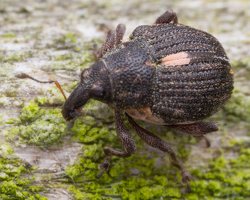- sort orderDefault
Photo title, A → Z
Photo title, Z → A
✔ Date created, new → old
Date created, old → new
Date posted, new → old
Date posted, old → new
Visits, high → low
Random - Google Map
- map
 home / Insecta · vabzdžiai / Coleoptera · vabalai / Curculionidae · straubliukai / Rhinoncus pericarpius · straubliukas
home / Insecta · vabzdžiai / Coleoptera · vabalai / Curculionidae · straubliukai / Rhinoncus pericarpius · straubliukas

-
 Rhinoncus pericarpius · straubliukas
Rhinoncus pericarpius · straubliukas
-
 Rhinoncus pericarpius · straubliukas
Rhinoncus pericarpius · straubliukas
-
 Rhinoncus pericarpius · straubliukas
Rhinoncus pericarpius · straubliukas
-
 Rhinoncus pericarpius · straubliukas
Rhinoncus pericarpius · straubliukas
-
 Rhinoncus pericarpius · straubliukas
Rhinoncus pericarpius · straubliukas
Rhinoncus pericarpius · straubliukas
- Ampfer-Dicknase
- zuringsnuitkever
- gruboryjek szczawiak
- syrenäsvivel
This species is generally common throughout the northern Palaearctic region, extending to the far east of Russia and Japan, it occurs throughout Europe from Portugal to Greece and north to the UK and central provinces of Fennoscandia and there are scattered records further north to the Arctic Circle, it was first recorded in the United States from accidental introductions from Europe in the 1920s and has since become widespread and locally common across the northern states and in eastern Canada. Adults occur throughout the year, they are active from April until September or October and may also be found during the winter as the host plants persist in even the coldest weather, they may be found in most open and fairly dry habitats such as grassland, road verges, arable borders and domestic gardens and may be quick to colonize recently disturbed areas. Host plants include various species of Rumex (docks) and are occasionally recorded from Rheum. Adults are diurnal, they feed on tender leaves and stems throughout the season, and mating occurs in the spring and early summer. Females lay eggs into the stems of larger plants, often causing a gall around the oviposition site, and larvae mine the stems, working their way down into the roots where they will pupate, ether within the stem or in adjacent soil. Both the larval and pupal stages last for about three weeks and new-generation adults appear from June but do not reproduce until the following spring.
2.5-3.6 mm. Easily recognized by the short and broad rostrum, 7-segmented funiculus, toothed claws and general habitus but there are a few similar species; the form of the pronotum and elytra are diagnostic and will soon become familiar even in the field. Body black or dark brown with sparse narrow grey scales and usually an elongate patch of dense pale scales at the base and often also at the apex of the sutural stria, legs pale brown with the femoral and tibial apices and the tarsi darker, antennae dark but usually paler towards the base. Head with long and diverging temples behind large convex eyes, surface irregularly depressed and closely punctured throughout rostrum broad and parallel sided with lateral scrobes that are hardly visible from above, prorostrum almost as long as the antennal scape in the female, distinctly shorter in the male. Antennae geniculate, the scrobes broadened before the apex and the funiculus seven-segmented. Pronotum transverse, about 1.4X wider than long, broadest at perpendicular posterior angles and curved laterally to a straight apical margin, basal margin produced medially, surface strongly and densely punctured, confluently so n places, and with a blunt tubercle either side towards the base. The pronotal scaling varies but there are often larger creamy scales on the lateral edges and along the centre. Mesepimera clearly visible in front of the elytral humeri. Elytra broadly oval and only slightly longer than wide, with sloping shoulders and smoothly curved lateral margins, with complete punctured striae that are deep and only slightly narrower than the interstices, all interstices rugose, especially towards the base, sutural interstice with pale scales at the base and apex but otherwise glabrous. In most specimens the elytra are distinctly scaled, especially along the inner interstices but this is variable and specimens tend to get worn. Legs long and robust, the femora untoothed and sinuate internally and the tibiae slightly curved which gives them a characteristic appearance, middle and hind tibiae with apical spurs in the male but unarmed in the female. Third segment of all tarsi strongly bilobed and the claws toothed. Similar to some other members of the genus but distinguished by the blunt, sometimes inconspicuous, pronotal tubercles, elytra which have sloping shoulders and are broadest about the middle and the deep and broad elytral striae.